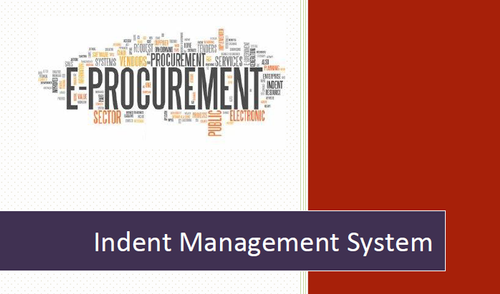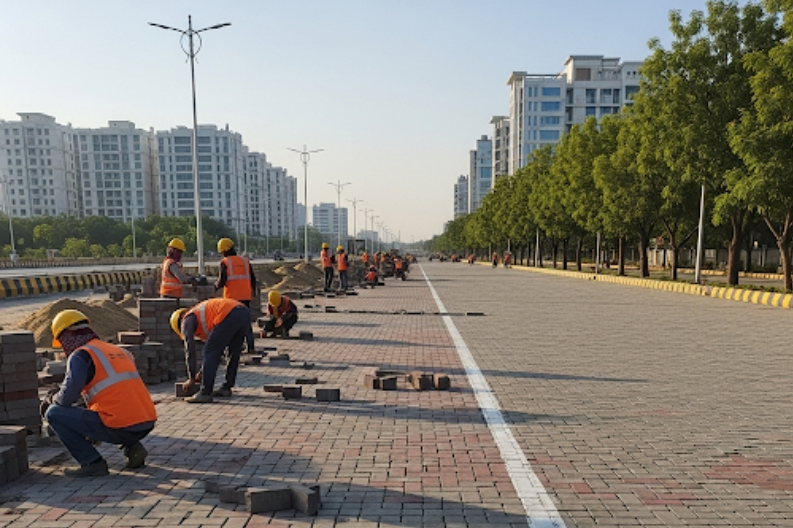The leading organizations and governments in the world are opting for electronic methods. Just to ease the process of exchanging goods and services. If you are a vendor for an organization, it would be better for you to register yourself online. After that, you can send the required documents online instead of personally visiting the office. In Punjab, the government registers and displays the list of tenders and the additional details through eProcurement Punjab. The digitalization of the process allows the vendors to register themselves on the organization’s portal. After that, they can send the required documents, view the latest announcements by the organization, and cancel their tender.
However, working with the portal can be difficult for the first time users. The following section of this article helps you learn better about eProcurement Punjab. You’ll also learn in detail about the process and components of the portal. This will ultimately smoothen the process of registration or browsing the portal for you.
What is eProcurement Punjab?

Electronic Procurement (e-Procurement) is a digital portal under the operation of the Government of Punjab. Through this portal, the details of the registered vendors along with their detailed information is publically available. Transparency is the key to successful democratic governance. Therefore, the registration of the tenders is only done through the online process.
How was it started?
The manual process of Procurement was in function for a very long time. There were multiple cases in the past where the details of the tenders were misplaced. Also, they were incorrectly recorded, or not available for public display. Thus, the introduction of this digital eProcurement Punjab portal was a game-changer.
The management of the supply chain is a mandatory task. This is because the supply chain consists of the details about the services and the products exchanged by the government. Just like any other business, the government hires multiple companies and individuals for different jobs. Thus, the Procurement system enters and displays the payment done for the consignment, date of registering, expected date of completion, and status of the project. This increases the efficiency of the process due to entry of the important information. With the digitalization of the process, suspicious activities find no room. The ease of accessibility of the eProcurement Punjab website allows the boards, agencies, and other establishments like the corporations to get the complete details of their tenders.
What are the components of eProcurement in Punjab?
The eProcurement portal consists of titbits that are responsible for the functionality of the website. For a first time user, understanding the components and their location on the portal would be a relatively difficult task. Consequently, the list of components of the eProcurement Punjab portal creates a room of understanding for the first time users.
Bid Submission

The portal has a dedicated section for the registration of the first time bidders. In addition to that, the login section is for the existing vendors. For detailed information on the process of online bidding, click on the ‘Bidders Manual Kit’. This button is on the bottom right section of the eProcurement Punjab portal’s homepage. Once the bidder is confident about the process, he should register himself on the portal. During the registration process, it is mandatory to submit the bid for the proposal. Along with that, the vendor must submit the details of his technical and commercial expertise.
Bid Evaluation

The system automatically evaluates the bid, after the vendor places it. After this, the government studies the vendors and their proposals. Once the system shortlists the vendors, it invites them to the electronic auction (e-Auction).
Electronic Auction

The government organizes the Electronic Auction (e-Auction) process for the shortlisted members. These are the members who are trying to obtain certain services or goods from the government. Depending on the type of service or the product, the portal has the capacity to conduct various digitalized auctions.
Indent Management

The indent management process is the foundation of the process of online tendering. With the help of this, the portal creates a specific requisition. This requisition is then open for the vendors to register and bid.
Creation of an all-inclusive Request For
There are various subsections that deal with the Request for different services and products. These requests are made by the vendors who need to demand or ask from the government. People abbreviate this as RFX (Request for Something). In this process, the government formulates the Request for Bid, Quotes, Proposals, and Information. Along with this, the portal designs the technical and commercial requirements for the particular tender.
Selection of the Vendor

Once the e-Auction process is over, the government decides on the appropriate bids. Based on the requirements, they select one or more than one vendor for a particular product or service. Once the online portal submits the Purchase Order to the selected vendors, the process of eProcurement ends.
Announcements

The government updates the latest announcements about the changes in the process or the new tenders in this section. It displays the helpline for GePNIC users. Along with this, it provides important information about the online payment dates, along with the other critical notifications.
Corrigendum
According to the Right to Information Act, the Corrigendum displays the documents of the latest tenders that the government issues. The Corrigendum mentions the date of the Tender Opening, Bid Closing, e-Publishing, and the Tender ID. Along with that, it mentions the name of the government organization, board, or directorate that issued the tender.
Tender Status
The eProcurement Punjab portal has three different criteria for searching the details of the tender. You can search for the tender based on its ID, type, or the organization details.
What are the benefits of eProcurement Punjab?
- The major benefit of eProcurement is the automation of the manual process. In this way, the speed of the procurement process increases significantly.
- Complete transparency.
- The increase in market scope for prospective buyers and suppliers.
- Usually, in the manual procurement process, the handling of authorities compromises the data. However, the eProcurement process avoids this mishap from happening.
- It is a cost-effective measure for executing the Procurement process.
Also read about DC Office Mohali – Latest Address & Timings.
Government
Strict Firecracker Rules in Mohali for Upcoming Festivals
The Mohali district in Punjab is taking strong steps to control firecracker usage during festivals.

ChatGPT Generated (Not a Real Image)
Strict firecracker rules in Mohali for upcoming festivals aim to protect public health and improve air quality during the festive season. The Mohali district administration in Punjab has taken strong steps to reduce pollution caused by fireworks. These measures will apply to popular celebrations such as Diwali, Guru Nanak Dev Ji’s Parkash Purab, Christmas, and New Year’s Eve to ensure safer and cleaner festivities for everyone.
The administration introduced these restrictions under Section 163 of the BNNS, directly banning the sale, use, and storage of traditional firecrackers. However, officials have allowed people to burst approved crackers only during specific hours.
Here are the permitted timings:
- Diwali: 8 PM to 10 PM
- Guru Nanak Dev Ji’s Parkash Purab (November 5): 4 AM to 5 AM and 9 PM to 10 PM
- Christmas (December 25-26): 11:55 PM to 12:30 AM
- New Year’s Eve (December 31, 2025 – January 1, 2026): 11:55 PM to 12:30 AM
District Magistrate Komal Mittal explained that Punjab has completely banned series or chain fireworks, also known as laris. These types of crackers release excessive smoke and noise, which seriously affect air quality and public health. Therefore, only green crackers, which are safer and less polluting, will be permitted.
Green crackers do not contain harmful elements like barium salts, mercury, antimony, or lead. They release fewer toxic gases and create lower noise levels. Moreover, only licensed sellers can trade these eco-friendly crackers. The administration believes this decision will encourage people to celebrate responsibly and help protect the environment at the same time.
To prevent illegal online sales, major e-commerce websites such as Amazon and Flipkart are strictly prohibited from accepting firecracker orders in Mohali. Authorities are continuously monitoring online activities to ensure full compliance with this order.
Meanwhile, the local police and the Pollution Control Department will jointly enforce these restrictions. They will actively check marketplaces and residential areas to stop violations. In addition, the Punjab Pollution Control Board (PPCB) will monitor air quality in different cities and towns. The PPCB will work according to the Central Pollution Control Board (CPCB) guidelines and pay special attention to non-attainment cities, where air quality consistently fails to meet government standards.
Officials pointed out that these restrictions fully align with the rulings of the Supreme Court of India and the National Green Tribunal (NGT). Because of this legal backing, the move carries both administrative and judicial support. It also reinforces the government’s ongoing mission to protect citizens’ health while maintaining environmental balance.
Anyone who violates these firecracker rules will face strict consequences. Offenders can be fined or even jailed under Section 15 of the Environment (Protection) Act, 1986, along with penalties under other environmental laws. The prohibitory orders will remain in effect from October 1, 2025, to January 2, 2026, covering the main festive period.
Environmental experts and health officials have welcomed this decision. They explained that during Diwali and winter, Punjab often experiences a sharp increase in air pollution due to smoke from fireworks and stubble burning. Therefore, these restrictions will likely help reduce harmful gases and dust particles in the atmosphere. Moreover, schools, NGOs, and local communities are promoting awareness campaigns about celebrating festivals with fewer crackers and more sustainable practices.
Ultimately, strict firecracker rules in Mohali for upcoming festivals reflect the Punjab government’s firm commitment to cleaner air and safer celebrations. With collective cooperation from citizens. These measures can create pollution-free festivities, protect public health, and ensure a healthier environment for future generations.
Government
Haryana Launches an Important Plan for a Greener Future
In a significant step towards protecting the environment, Haryana’s Chief Minister Nayab Singh Saini announced the State Environment Plan (SEP) 2025-26 on Tuesday.

ChatGPT Generated (Not a Real Image)
In a significant move for sustainability, Haryana launches an important plan with the introduction of the State Environment Plan (SEP) 2025-26. Announced on Tuesday by Chief Minister Nayab Singh Saini in Panchkula, this initiative aims to make Haryana a leader in environmental protection and future-ready development. The plan focuses on achieving Sustainable Development Goals (SDGs) with clear targets to improve living conditions across the state.
The SEP is more than just a framework. It includes a detailed study of Haryana’s environmental condition. The focus areas are agriculture, waste management, transport, industry, and pollution control.
The State Pollution Control Board worked with the Indian Green Service Development (IGSD) and the Energy and Resources Institute (TERI) to draft this plan. A key highlight is the report A Dual Strategy Sprint Towards Sustainability. It calls for reducing both carbon dioxide emissions and short-lived climate pollutants. This approach will improve air quality and aligns with regional efforts in Punjab.
Waste management forms another crucial part of the SEP. It introduces 13 Integrated Solid Waste Management Plants to tackle growing urban challenges in cities like Mohali and Chandigarh. The plan also emphasizes improving water and air quality, which are vital for public health and well-being.
Officials noted that every component of the SEP will help Haryana use resources wisely while promoting long-term sustainability. The initiative shows the state’s proactive stance against pressing issues such as pollution, waste, and resource depletion.
The timing of this plan is vital. Global awareness of environmental challenges is growing quickly. By using innovative solutions and involving both institutions and citizens, Haryana aims to become a model state for eco-friendly growth.
Chief Minister Saini’s vision for a greener Haryana is clear in this bold step. The SEP seeks to protect resources and inspire communities to adopt sustainable practices.
In conclusion, Haryana launches an important plan that acts as a blueprint for future growth rooted in environmental responsibility. With strong policies, organizational support, and citizen involvement, the state is paving the way for a healthier tomorrow.
Government
Haryana CM Announces New Paver Block Roads in Panchkula
Improving Roads in Panchkula
On Monday, Haryana’s Chief Minister, Nayab Singh Saini, made an important announcement.

Improving Roads in Panchkula
On Monday, Haryana CM Announces New Paver Block Roads as Chief Minister Nayab Singh Saini ordered the construction of new roads in Panchkula district. These roads will replace the old, dusty “kutcha” roads and benefit 19 villages in the hilly areas of Morni and Kalka.
Panchkula is about 20 kilometers from Chandigarh. This makes it an important link between Haryana and Punjab. The new roads will help make travel easier for many people living in the region.
Details of the Road Projects
The Chief Minister has directed that a total of 61 kilometers of roads be paved. Each of these roads will be 12 feet wide. This width will help ensure smooth traffic flow for both locals and visitors.
- The road upgrades include:
- Panipat-Safidon (41 km)
- Safidon-Jind (21.65 km)
- Saha Chowk-Panchkula-Yamunanagar (four-lane road)
- Saha Chowk-Kalpi
- Tohana-Ratia
These upgrades will not only make travel easier but also improve safety for everyone using the roads.
Additional Road Projects
Beyond the 61 kilometers of paver block roads, Saini has asked officials to speed up work on several more road projects in Panchkula. These include:
- Thapali Badisher-Koti (1.68 km)
- Pinjore Mallah-Mangniwala (1.20 km)
- Gobindpur-Thathar (5.35 km)
These projects aim to enhance connectivity in Panchkula and support the growing population.
Next Steps for the Construction
During a review meeting with officials from the public works and forest departments, Saini emphasized the need for timely action. He instructed that work should begin quickly after obtaining a no-objection certificate (NoC) from the forest department. This certificate is necessary for construction in areas with trees and wildlife.
Principal Secretary to the Chief Minister, Arun Gupta, and Additional Chief Secretary (PWD), Anurag Agarwal, were present at the meeting. They discussed strategies to ensure that the projects are completed efficiently and on time.
Background on Panchkula
Panchkula is not just another town. It is part of the larger region around Chandigarh, which is known to be one of the cleanest cities in India. Cleaner cities often produce better living conditions and infrastructure for nearby areas, like Panchkula. The development of new roads will help improve civic services and support the needs of residents.
The Impact of Better Roads
Better roads mean more than just smoother driving. They connect communities, help businesses grow, and make it easier for people to access education and healthcare. For the hilly areas of Morni and Kalka, these roads will make it easier for residents to travel to nearby towns and cities.
Local farmers can transport their goods more easily. This can lead to increased sales and better incomes. Students will also find it easier to reach schools and colleges. Parents will have less worry about how their children get to school.
The Future of Infrastructure in Haryana
The move to replace kutcha roads with paver blocks is part of a larger plan. The Haryana government is focusing on improving rural infrastructure. This effort aims to boost the local economy and improve the quality of life for people living in these areas.
As more projects like this are developed, the future looks bright for the communities in Haryana. Residents can look forward to better roads, stronger connections, and improved services.
Conclusion
In conclusion, Haryana CM Announces New Paver Block Roads, marking a positive step for Panchkula. The construction of 61 kilometers of new paver block roads will greatly benefit the region. With prompt action and good planning, these improvements will help transform the lives of many people living in the hilly areas of Morni and Kalka.
-

 City Guide3 years ago
City Guide3 years ago3B2 Mohali Market Shops: Discover 44 Hidden Gems
-

 Entertainment2 years ago
Entertainment2 years agoTop 15 Punjabi Models – Male and Female List
-

 Entertainment3 years ago
Entertainment3 years agoTop 11 Punjabi Comedians of All Time
-

 Jobs4 years ago
Jobs4 years agoTop 20 IT Companies in Mohali
-

 Food4 years ago
Food4 years ago11 Best Restaurants in Mohali You Must Visit
-

 Food3 years ago
Food3 years agoTop 15 Cafes in Mohali you must visit
-

 Property2 years ago
Property2 years agoWho Lives In Homeland Mohali: Punjabi Celebrities, Business People…
-

 Education2 years ago
Education2 years ago10 Famous Punjabi Writers With A Great Impact On The Literary World
